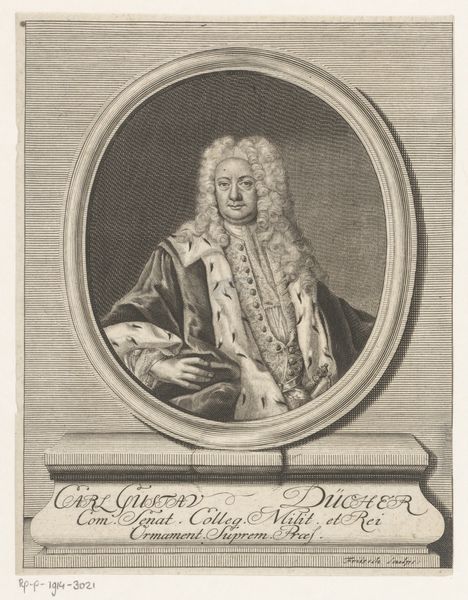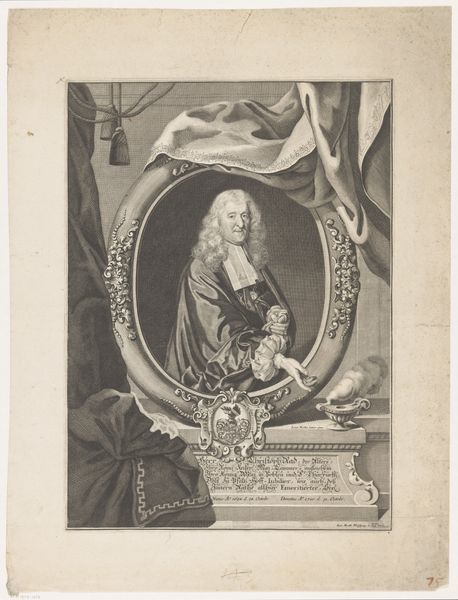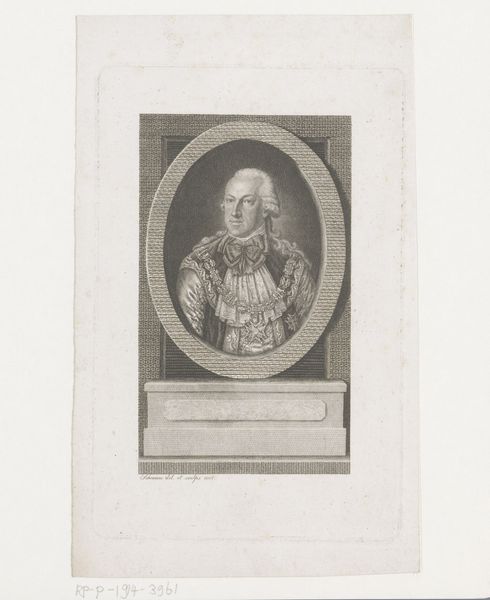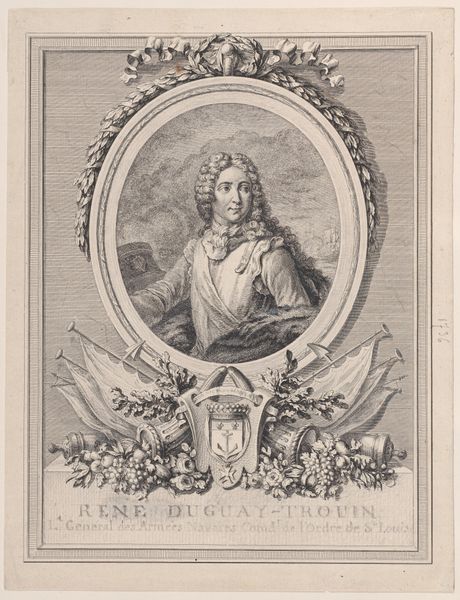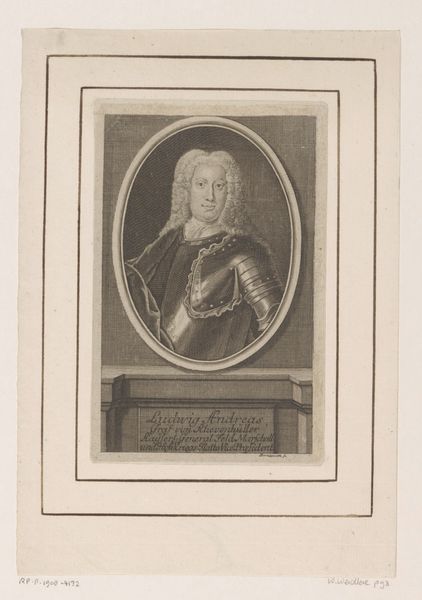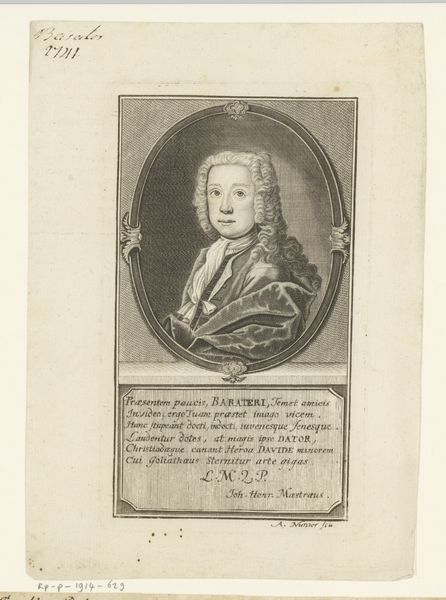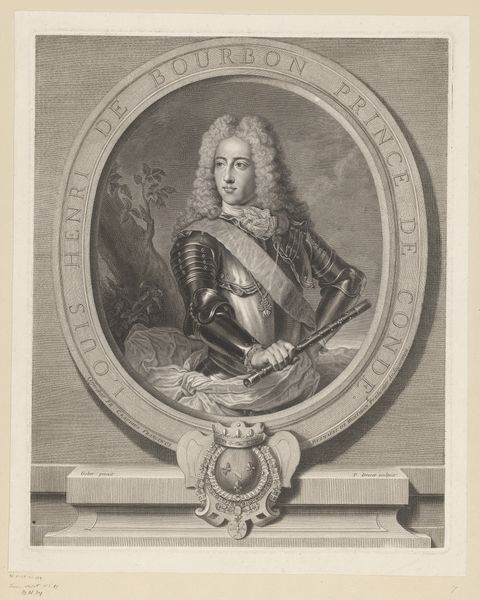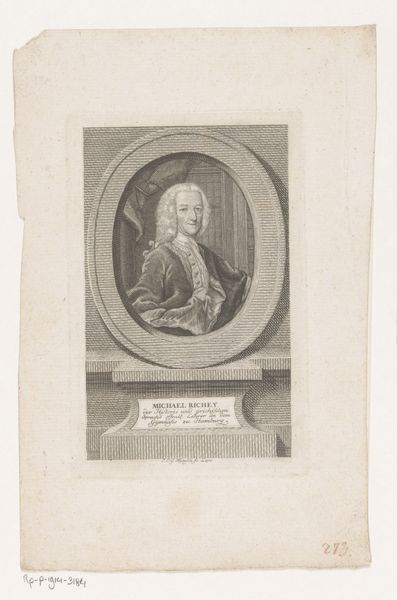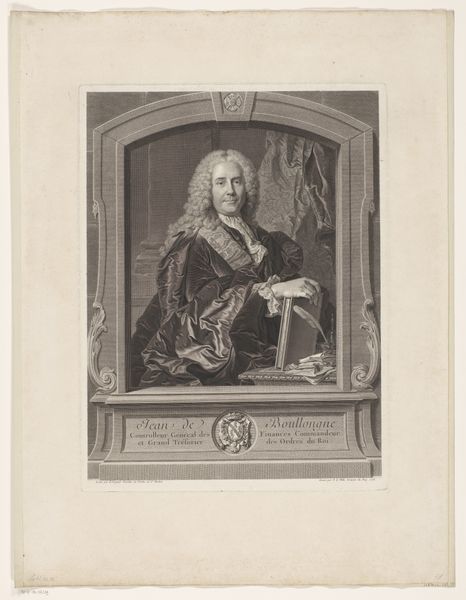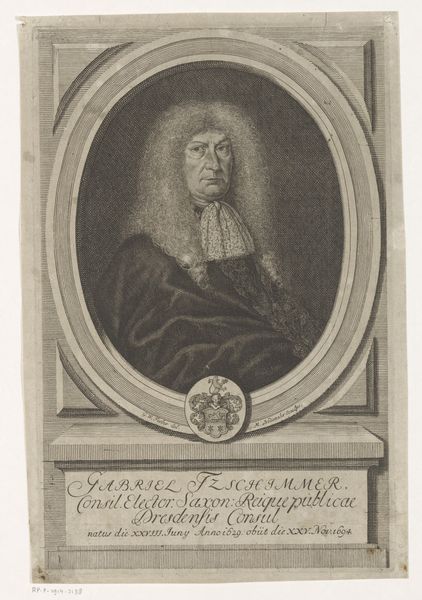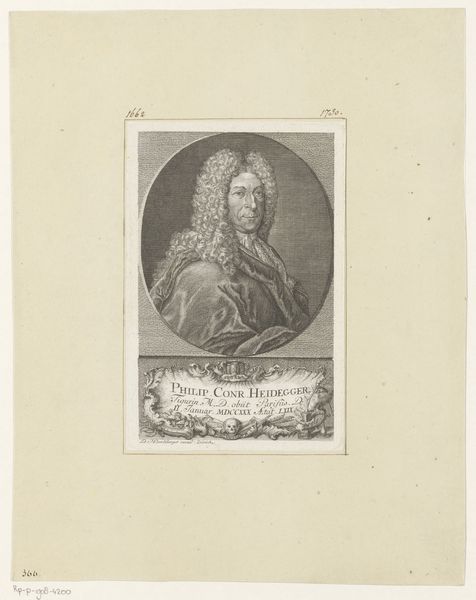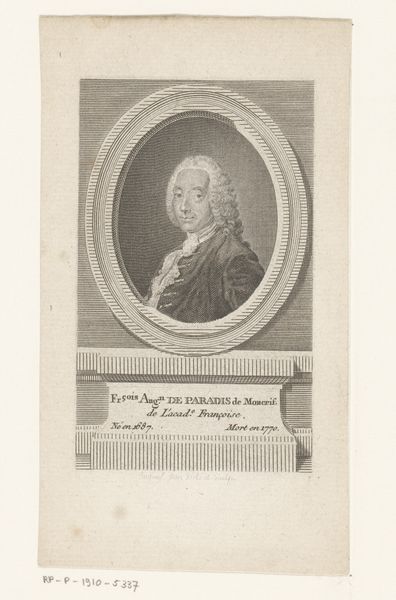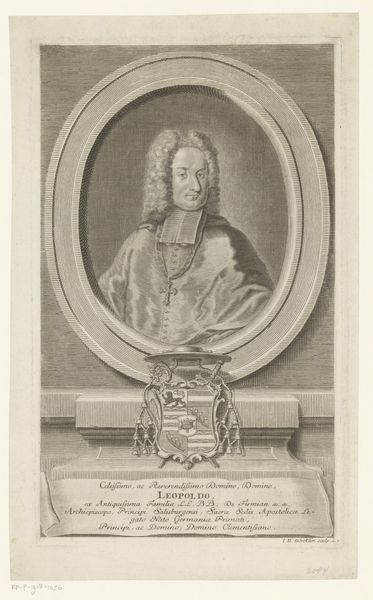
engraving
#
portrait
#
baroque
#
historical photography
#
line
#
history-painting
#
academic-art
#
engraving
#
historical font
Dimensions: height 196 mm, width 162 mm
Copyright: Rijks Museum: Open Domain
Editor: This is an engraving, "Portret van Gustaf Cronhielm," made sometime between 1705 and 1737 by Christian Fritzsch. It's striking how the detail of the lines creates so much texture, especially in the hair and robes. What stands out to you? Curator: What I find particularly compelling about this portrait is how it embodies the performance of power and status within the context of the Baroque era. Consider Cronhielm's elaborate wig, the opulent fur-lined robe, and even the Latin inscription proclaiming his position, as chancellor, effectively his power and place in society are inscribed quite literally on his portrait. How does this image reinforce or challenge the viewer's understanding of nobility at that time, and even our understanding of power dynamics today? Editor: That’s interesting. I hadn't really considered how much it's staging a very specific image. It feels very constructed now that you point it out. Does the choice of engraving, rather than painting, contribute to that? Curator: Absolutely. Engraving allowed for wider distribution, transforming the portrait into a tool of propaganda and public image management. Furthermore, it evokes the dissemination of information through print and reflects growing centralized power through bureaucracy, which impacts both the sitter’s own identity and the consumption of it. Could this then challenge our perception of identity? Is his inherent, or performed? Editor: Wow, I never thought of it that way. So it's not just about looking powerful; it's about controlling how that power is perceived. Curator: Precisely. And by examining the historical and social forces that shaped its creation, we gain insights not only into Cronhielm himself, but also the very nature of representation, authority and the male gaze. Editor: That makes me think about who had access to these engravings and how it contributed to shaping public opinion, the visual dissemination of power. Thank you for expanding my perspective! Curator: My pleasure! By critically engaging with such works, we can explore how they perpetuate or subvert societal norms.
Comments
No comments
Be the first to comment and join the conversation on the ultimate creative platform.
